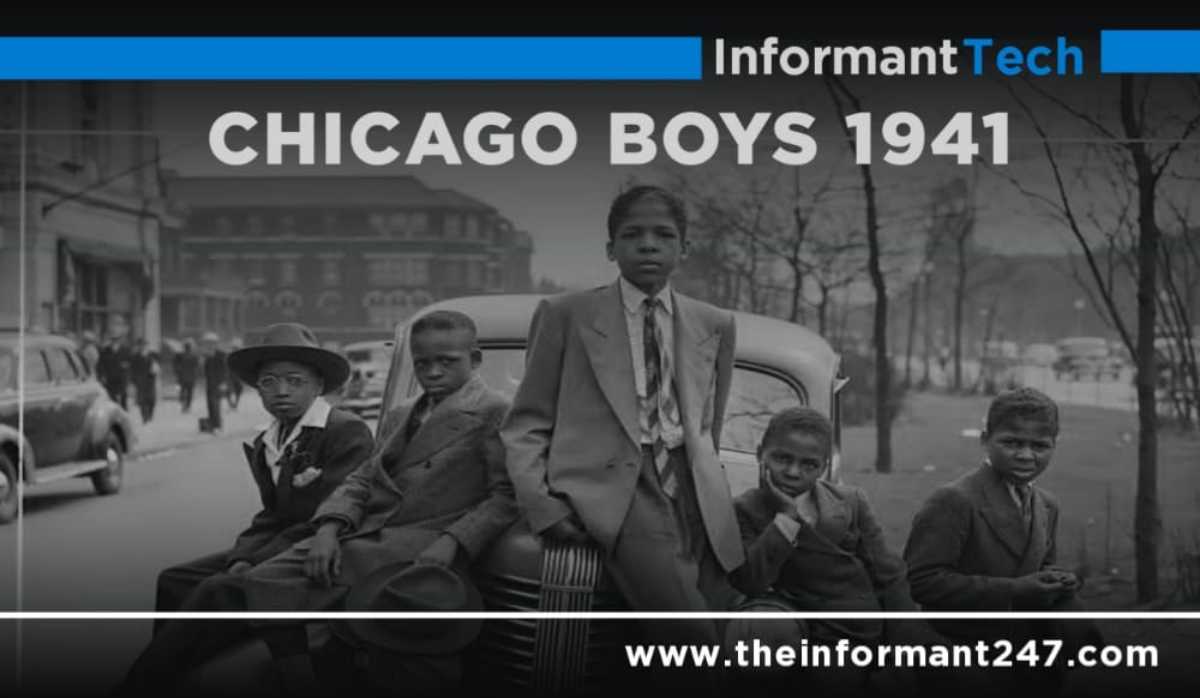BY BANKOLE TAIWO JAMES
Back in 1940s in Chicago, precisely 1941 two Farm Security Administration photographer named Russell Lee and Edwin Rosskam traveled around Windy City of Chicago on a assignment during spring of 1941.
The assignment was an epic documentary photography project that centered on America’s cities, the day-to-day living for residents on the south side of Chicago.
Rosskam and Lee with Richard Wright as a guide, spent three weeks ranging throughout the city, from Maxwell Street through the impoverished “kitchenette” neighborhoods to wealthier areas near 47th street, capturing the city’s narrow, densely populated Black Belt during the greatest expansion of the city’s black population under the auspices of the Office of War Information.
To lay a proper foundation to this story, let go back to history when the area called ‘Black Belt’ emerge. Before 1940s, during the early decades of the 20th century, the Great Migration saw roughly six million African-Americans leave the rural South and travel North in search of better opportunities.
Those who left the southern states were fleeing as result of segregation, disenfranchisement and the violence triggered by the racist Jim Crow South. As at then, Chicago was an industrial hub that offered better opportunities for those seeking employment in the railroad and meatpacking industries, as the Windy City offered the best prospects for self-determination, survival and success.
On the contrary, for those who did move North, life wasn’t what they hoped it will be, It wasn’t as easy while they are still faced with many obstacles. Many were forced to live in a narrow strip of impoverished neighborhoods on the Chicago’s South Side. It was this area that later became known as the ‘Black Belt’
Back to our discussion, Edwin Rosskam and Russell Lee in 1941 on the morning of easther Sunday walked round the street with cameras in their hands and took more than 1,000 South Side pictures.
Among these pictures was a famous photo taken on Easter Sunday morning at an Episcopal church featuring the faces of five young African-American boys and today regarded as some of the country’s most treasured photos , but the identities of the boys remained unknown.
The photo of five African-American young men dressed for church perched atop a Pontiac Silver Streak Six has become iconic in Chicago. And like me, many other people might have wondered the same thing: Who were these young men and what became of them?.
As earlier stated in the concluding part of third paragraph,no one have been able to identify the identity of the five negro boy except the tall, hatless child in the middle who is Spencer Lee Readus, Jr. Spencer Lee Readus, Jr was just 14 years of age when the photo was taken, and he passed away at the age of 86.
According to Spencer Lee Readus’ daughter, Claudia, she said her father remembered the day like this: “I was going to the show on Easter Sunday and a white man approached me to ask if he could take a picture of me and these other boys.”
Lee posed the kids in front of a parked car. Spencer was the tallest and the only one not wearing a hat, so he was put in front and center in the photo. Remarkably, that was the last Readus heard or saw of the photo for more than 50 years.
In 1990s, when Readus and his son were in the waiting room at a dentist’s office. Spencer Lee was reading a magazine when his son saw him rip out a page and put it in his pocket. Later that day at home, Spencer Lee showed his son the page with the photo, and said he was the one in the picture.
LIFE OF SPENCER LEE READUS
We don’t know much about his childhood, but we can say that at the age of 14, of 1941, he was among the five Africa-America boys who were captured on a Easther Sunday morning by Russel Lee and Rosskam. Spencer died in 2013 at the age of 86.
Spencer Lee went on to serve in the U.S. Army during World War II and build a career as a plaster foreman. In a 1956, Spencer Lee is the only African-American at a Chicago Plastering Institute celebration.
He and his wife of 65, Setrennia, raised four children – Spencer Lee III, Claudia, Cherie, and Laurence – in the Roseland neighborhood.
As a father, he was a devoted family man with a phenomenal work ethic. Claudia said her father had a saying he was fond of: “Work while you can- a man should always have money.
Your own mama don’t want to see you coming if you can’t afford to even buy her a stick of gum.”. we can’t say much about his life because little was recorded about him, but thanks to Spencer Lee’s family, especially Claudia Kemp, who told us his story.
SIGNIFICANCES OF THE IMAGE
The image was part of a photography project by the federal government’s Farm Security Administration documenting the struggle of the rural poor during the Great Depression.
Part of this project involved documenting the great migration of African-Americans to Chicago from the rural South. Two of the FSA photographers, Russell Lee and Edwin Rosskam,had to spent weeks taking photographs in Chicago.
The picture tells us that most black Chicagoans weren’t middle class, as Lee and Rosskam knew quite well. They may have spent part of their Easter with middle-class boys and Episcopalians, but their photos remind us that while some people were in church, others were trying to earn a living.
The photo initiated a collaboration between Native Son by Wright and the documentary project — FSA photos and a text by Wright which describe the condition of black America.
The five boys are representative of Chicago’s diverse African-American community, in which poverty and prosperity existed side-by-side.
While most black Chicagoans were poor, the city was also home to a self-confident black middle class, Which you can see some of that confidence in photo.
In nutshell, the idea behind this article is to preach the gospel of Pan-Africanism.
Read Also: Queen Amina: The Warrior King of Zaria
Checkout: Bashorun Gaa: Strength of Oyo Mesi and fall of old Oyo empire


